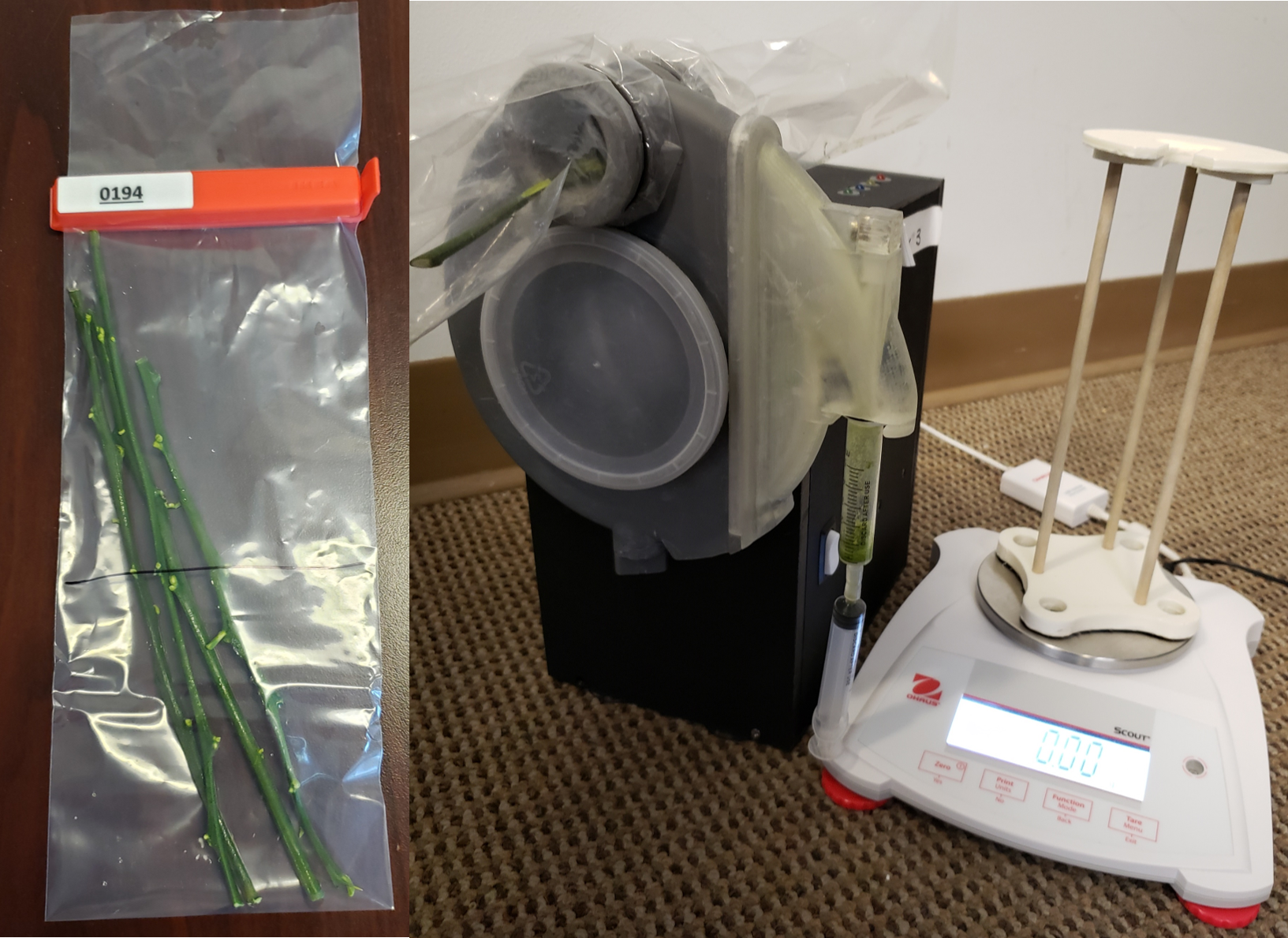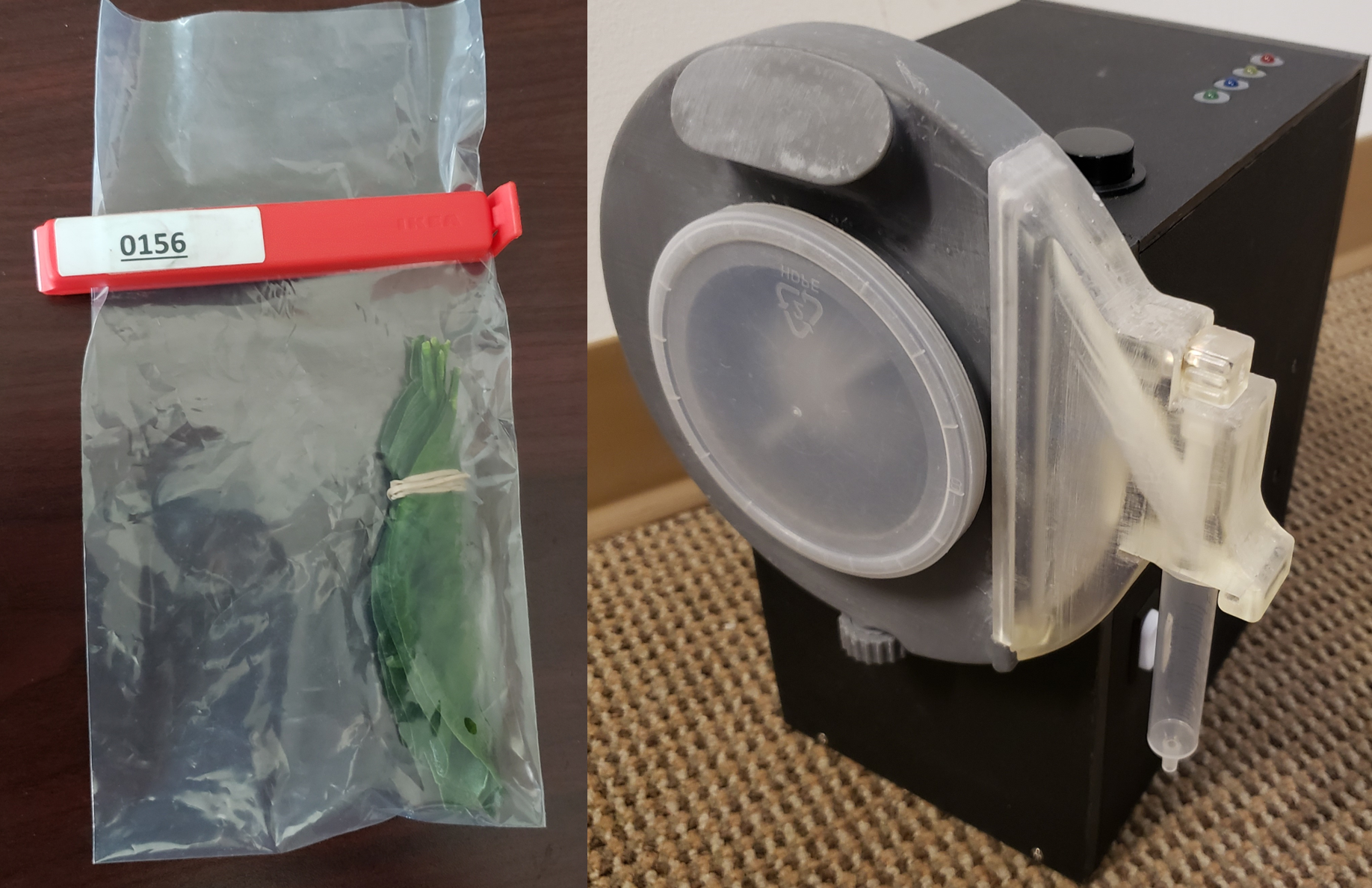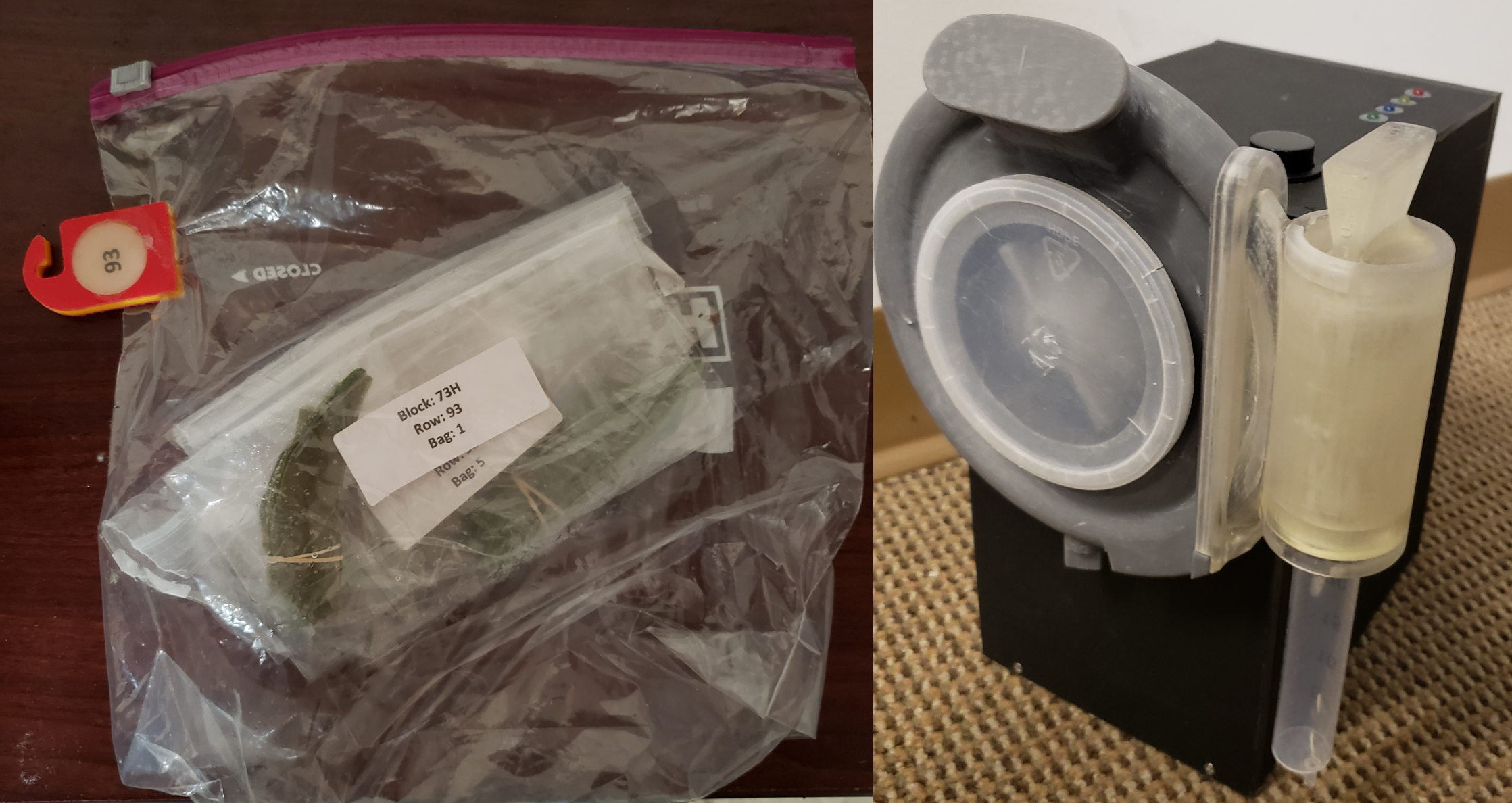Budwood Tissue Extractor
BTE
The BTE is an attachment for our Tissue Extractor(TE) system that processes budwood. This replaces the hand chopping, freeze drying, and bead beating of the current regulatory processes. On top of the systems and equipment it replaces, it is compatible with TES's automatic sample tracking system. The median processing time of the BTE over ~1000 samples is 02:28 compared to 08:34 average of the CCTEA.
Click To See BTE Demonstration Video

